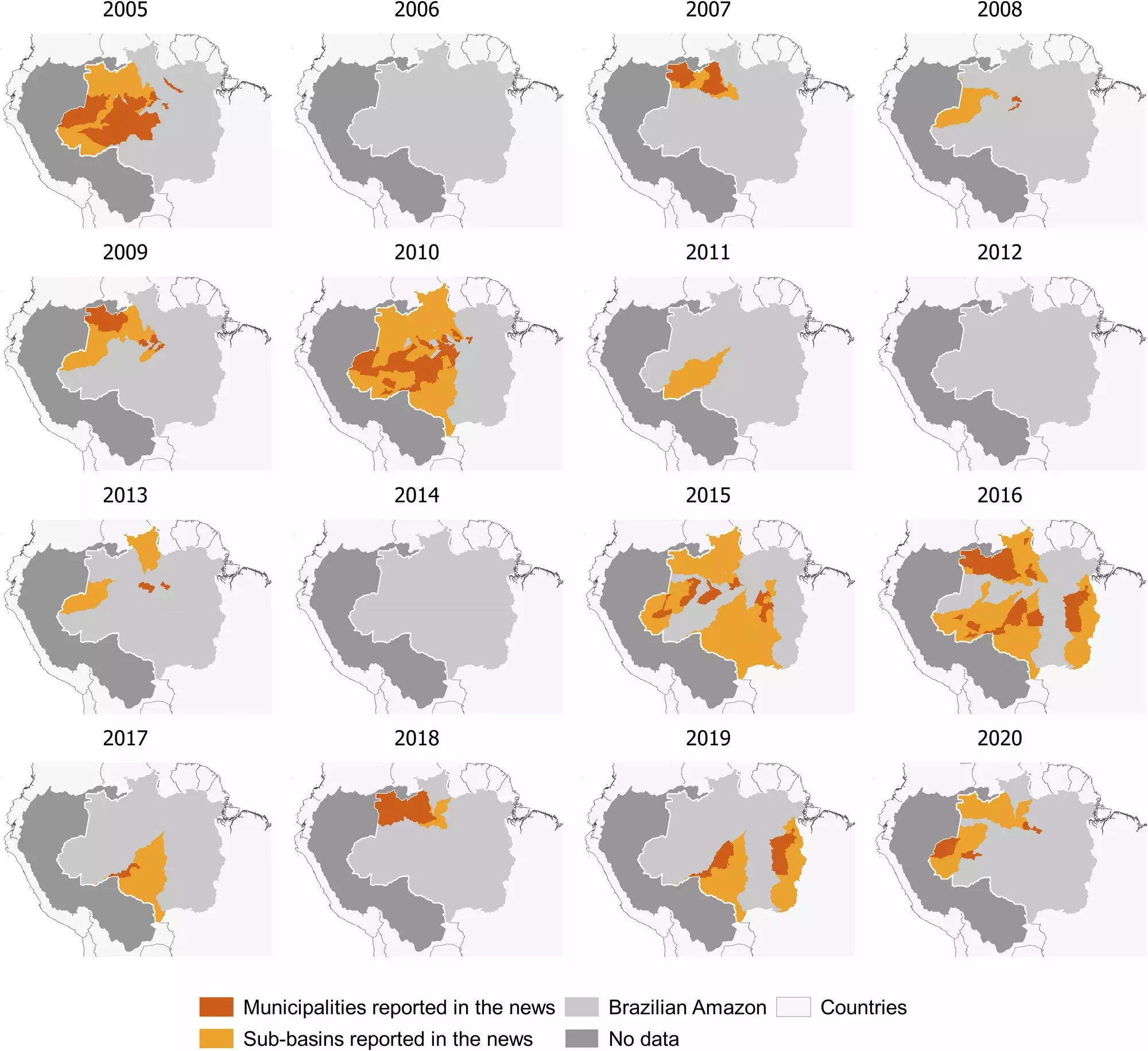Over the past two decades, the Amazon basin has experienced devastating droughts that have drastically changed the landscape of its communities and ecosystems. A recent study conducted by the Institute of Environmental Science and Technology at Universitat Autònoma de Barcelona (ICTA-UAB) reveals alarming statistics about the increasingly severe impacts of climate change on this vital region. The data indicate that the duration of low water levels has increased by approximately a month, affecting half of the non-Indigenous localities and over half of the Indigenous villages in Brazil’s Amazon basin. This isn’t just data; it’s a clear call to action, highlighting the urgency with which we must address these unprecedented changes.
Human Impact: A Community at Risk
The Amazon rainforest is often portrayed as a paradise, teeming with life and diversity. However, for many local communities, the paradise is deteriorating under the weight of climate-related adversities. Research led by Brazilian scientist Letícia Santos de Lima has unveiled a grim reality: severe droughts have left these communities vulnerable to isolation, particularly during critical periods when they depend on river transport for their livelihoods. The implications are far-reaching. With water levels plummeting, access to essential services, markets, healthcare, and educational resources becomes increasingly precarious. The once-fluid transport routes become hindered, transforming vibrant communities into isolated pockets of desperation.
In essence, these droughts are not merely a nuisance; they represent a profound threat to the fabric of Amazonian society. With nearly 50% of non-Indigenous areas facing similar challenges, the socio-economic consequences are immeasurable, ranging from food scarcity to reduced educational opportunities for children. This crisis emerges from a complex interplay between historical resource management and contemporary climate issues, raising questions about equity and sustainability in the Amazon basin.
Understanding the Ascending Crisis
Drought events have been recorded in 2005, 2010, and 2015-2016, each exhibiting a pattern of extended low water levels—which have now reached over 100 days compared to the traditional 70-day expectation. This shift calls for urgent re-evaluation of how both scientists and policymakers understand and respond to environmental challenges. The research meticulously highlights how climate change and deforestation conspire, creating a vicious cycle that exacerbates the impacts of these droughts.
Dr. Letícia Santos de Lima’s call for immediate and substantial policy responses is significant. It underscores a critical gap in our environmental governance—many responses remain reactive rather than proactive and preventative. This is a systemic flaw that prioritizes short-term fixes over robust, long-lasting strategies tailored to adapt to the evolving realities of climate change.
Misconceptions and Alternatives
The prevailing idea that constructing more roads could alleviate community isolation during drought is dangerously misguided. Roads often facilitate deforestation, leading to detrimental changes in rainfall patterns and increasing the sediment in rivers—further deteriorating navigability. This evidence serves as a wake-up call, shifting the perception of development. True progress would involve investing in sustainable initiatives that enhance resilience rather than jeopardizing the integrity of the Amazon.
Moreover, the complexity of the situation, demonstrated by interdisciplinary research methods, suggests that a multi-faceted approach is essential for lasting change. Harnessing spatial analysis alongside hydrological and media content analyses showcases just how interconnected these issues are, urging policymakers to look beyond traditional silos of information.
A Call to Forge a New Path
The findings reflect a stark choice for Brazilian authorities: will they continue to ignore the voices of the Amazon’s inhabitants and the evidence presented by scientists? Or will they take a stand for transformational policies that emphasize adaptation, conservation, and community engagement?
As climate change continues to reshape the world, the Amazon basin serves as a poignant reminder of the direct consequences of inaction. The time is ripe for innovative thinking, combining environmental conservation with community-led development, to forge pathways toward revitalizing the Amazon not only as a resource but as a lifeline for those who call it home. Without this, we risk losing not only the ecosystem itself but also the rich tapestry of cultures and communities that have thrived there for generations.


Leave a Reply